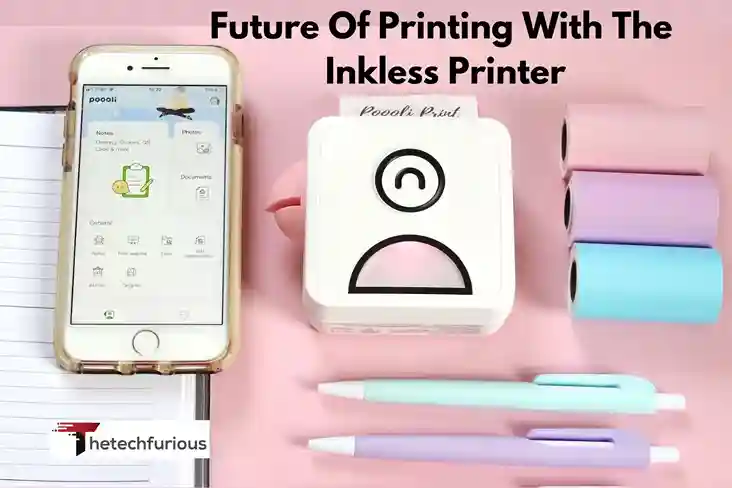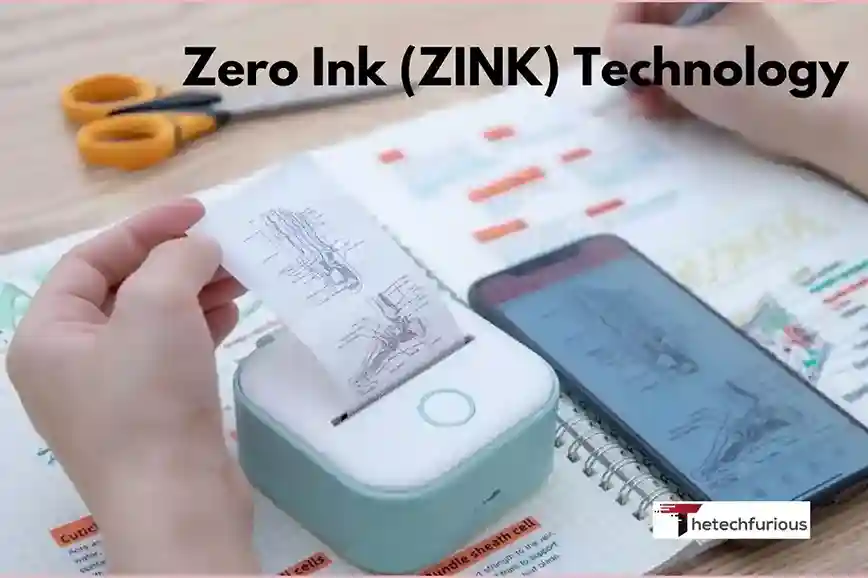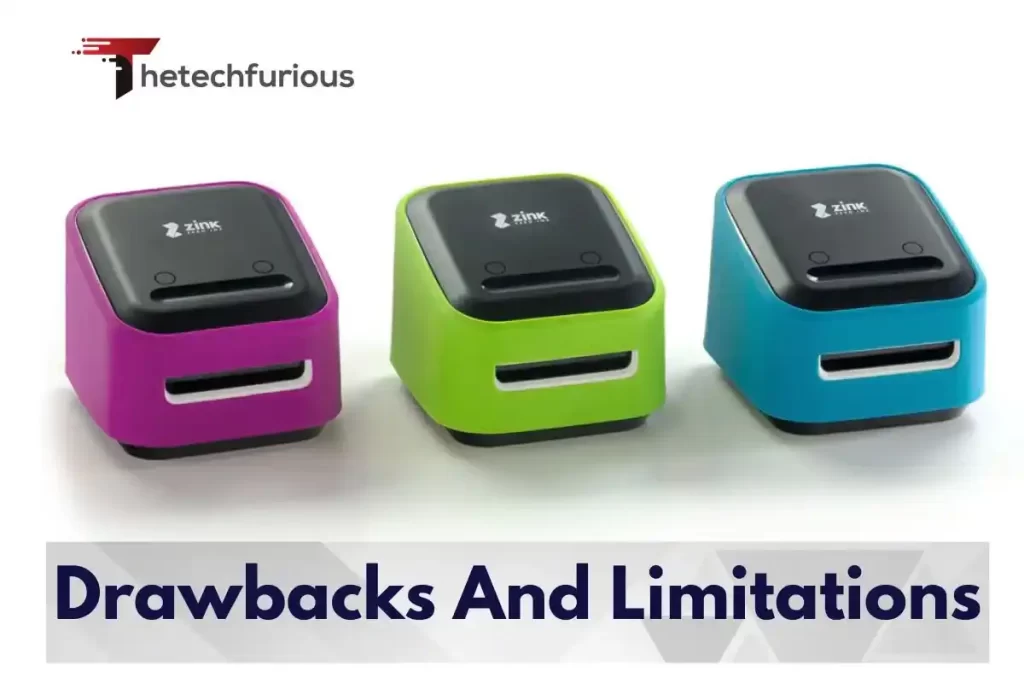Future Of Printing With The Inkless Printer
The innovation in the inkless printer has had a tremendous transfer from the dot matrix and inkjet printers days.

The innovation in the inkless printer has had a tremendous transfer from the dot matrix and inkjet printers days. Another interesting innovation that has taken place in the recent past is the introduction of a range of printers that do not require ink.
These innovative tools assure to alter the existing form of producing prints since they are not like the common ink cartridges toner. Touching upon the concept of inkless printers. In this blog post we will shed light on their working principle advantages. Use cases as well as possible advancements in the future.
How Inkless Printers Work
This refers to a relatively new concept in the world of printing that does not require ink or any sort of toner. They seek to use new techniques to print how inkless printers work with the best quality materials without necessitating them. The usual complicated and pricey conventional print material gadgets.
Here, we take a closer look at the fundament that underpins inkless printers and explain. How they work using thermal printing and ZINK (Zero Ink) as an example.
Thermal Printing Technology
Direct Thermal Printing
In this method, there is thermal paper that has been treated in a special way to provide it with the necessary features for further usage in the printer. The paper is sensitive to heat and when the head warms up it moves and prints the areas. That have to be black and so forms the image or the text that was desired.
People widely employed this method when printing receipts and shipping labels due to its simplicity and fewer demands on routine maintenance. For its part direct thermal printers do not use ink, toner, or any form of ribbon. Thus desirable in the world because of the costs and environmental concerns associated with making those consumables.
Thermal Transfer Printing
While in direct thermal printing the printer does not need a ribbon thermal transfer printing uses a ribbon coated with wax or resin-based ink. The printer head warms the ribbon in essence transferring the ink to the paper. This is because it is well suited for use in printing labels.
They require a high level of durability in that they can be used in conditions. Such as in activities that involve high chemical or heat sensitivity or where the labels are exposed to water or ultraviolet light. The main advantage of it is the better quality and duration of the printed materials in comparison with direct thermal printing downside is the need for ribbon.
Zero Ink (ZINK) Technology

Embedded Dye Crystals
ZINK technology preliminary involves the incorporation of dye crystals in the paper and does not require the use of ink cartridges. These crystals are colorless initially and are incorporated into different layers beneath a polymer covering layer.
The paper takes its color from the inkless sticker printer and most of the time. The paper that you see is blank and white.
Heat Activation
In the process of printing through heating devices printer head heats to different temperatures and for various durations to set the crystals of dye. Heat instability is used to program the crystals to appear in given colors this is largely in cyan, magenta, and yellow.
Since these three colors can be combined in different ways. They can create a whole range of colors and therefore the printer can produce the best quality prints with high levels of colors.
Such as the photo printers which make use of the ZINK technology. Which is smudge-proof and water resistant and tear proof without ink.
Advanced Control Systems
Precision Heat Application
Despite the absence of ink in the printers, other operational aspects of the machines include elaborate controls to ensure that the required amount of heat is applied correctly to produce the print. These systems ensure adequate amounts of heat are used to the right areas on the paper or ribbons to produce better prints so that the images are sharp and clear.
Image Processing
The main function they are the printer’s firmware and software responsible for processing image data and converting it into print-head instructions. This allows for various factors such as the intensity and duration of heat needed to be applied to attain the necessary color densities and the quality of the final image.
The control systems also assist in maintaining the quality of the prints to be uniform and reducing occasions of minimizing errors.
Environmental and Economic
Reduction in Consumables
Inkless printers one of the major benefits therefore is the versatility of not having to use common items such as ink cartridges and toner again. This not only makes printing cheaper today but also reduces the constant expenses on new cartridges and toners and rejects the problem of safe disposal of such materials.
Energy Efficiency
As mentioned, inkless sticker printers are characterized by relatively higher energy efficiency than those requiring cartridges. Furthermore, no mechanical parts utilized in the process of ink or toner transfer contribute to its efficiency in energy consumption. In thermal printing systems lowered power demands are also attributed to the relatively simple and efficient mechanism.
Portability And Versatility

Compact Design
There are differences between inkless printers in size and weight, making them quite portable.
This portability is particularly convenient when you need to take out the EPSON printer for quick use, for example, printing receipts, labels, or photos from a mobile device.
Various models of compact portable photo printers built with ZINK technology do not take up too much space and can be easily stored in a pocket or a small bag.
Adaptability To Various Applications
Printing using the inkless method is suitable in offices and other facilities due to its effectiveness in printing. Starting from the photo printers you see in the local grocery shops to commercial label printers inkless printers are used.
They are used for example in retail solutions for receipt printing logistics for label printing in medicine for patient wristbands along even in creative industries for photo printing.
Benefits of Inkless Printers
Certainly, In this blog of thetechfurious here are some benefits of inkless printers.
Cost-Effectiveness
Inkless printers score the necessity to use regular ink cartridges, toner, or ribbons for imprinting. They also pointed out that the use of the indicator would be a significant reduction in power as consumables no longer need to be bought often. The only continual cost is the paper that the printer uses and typing on this paper may be cheaper in the long term.
Traditional printers have nkless printer mini to perform a lot of adjustments more frequently to check on the ink or toner levels clean the print head as well and frequently replace parts.
Inkless printers are relatively easier systems with fewer add-ons that can wear out or have a tendency to misbehave. This is due to less cost in terms of repair and maintenance as well as reduced time. When the machine is out of use.
Environmental Sustainability
Inkless printers further improve environmental responsibility through the lack of need for ink cartridges and toner, leading to less consumption and packaging that is environmentally unhealthy. They are energy-friendly so the amount of power being consumed by most of them is way below. That of the normal printers and most of them are Energy Star compliant.
Common to the four printing methods the degree of hazardous chemicals employed in the printing process is relatively low. This means that the level of emissions of VOCs and other pollutants is also low. The special papers used are often recyclable which helps to save the planet’s resources and support a circular economy.
Inkless printers also are reliable since they do not have many mechanical parts and thus have fewer electronic-associated issues as well as less electronic waste. The use of inkless printers could be deemed more effective from an ecological point of view compared to regularly used printers.
Efficiency and Convenience
Inkless printers utilize innovative technology and improve the utility of their equipment in terms of both time and money by avoiding the need to constantly replace cartridges of regular ink or toner. They include a portable design which makes them easy to carry along and is suitable for occasions requiring on-the-spot printing solutions.
Its operating procedure is quite simple inkless printer mini to set up and requires a limited amount of maintenance to be done. Therefore printing can be done quickly and efficiently. These prints do not smudge or wear away and they are water resistant for a long duration of time, making them of good quality.
Inkless printers also benefit from many innovative features for instance wireless connectivity. That allows for easy printing directly from a mobile device. Their consistent functionality and lesser requirements when it comes to maintenance make them one of the most suitable choices no matter if it is the household or the office.
Durability And Longevity
Portable types are durable devices built to the highest quality standards using long-wearing materials and well-built components that stand up to heavy use. In contrast with other types of printers for instance. For those that employ moving parts the types of printers described are sturdy and thus long-lasting.

Inkless printers do not smear and as a print have an extended resistance to fading. These printers are produced to provide maximum durability to meet the intensive demands of the work setting.
Many mistakes people make are caused by a lack of proper maintenance and care for their printers. They can be use for quite a long time and even these years of usage do not cause considerable deterioration in their performance. For this reason, they are renown for their durability and especially the type of print. That can withstand the stringent test of time.
Applications of Inkless Printers
The following are the various uses of inkless printers. There is no area of human end use that is not in some way touch by inkless printers. Some common applications include.
Retail and Point of Sale (POS)
Some of the main applications that incorporate the consumption of inkless printers include the receipt and invoicing along with sales orders. Due to their speeds and accuracy in imprinting quality images on the card substrate are suitable for use in easing transactional processes.
Logistics and Shipping
Common uses of inkless printers are in logistics and shipment services. Where the printer is use to create shipping labels, packing documents and bar codes. Their versatility and non-progression to smudging make the labels remain credible once in the shipping conveyance.
Healthcare
The types of printers that exist today include inkless printers. Which are use in health facilities to print patient wristbands, medicine labels as well as records. The characteristics of longevity and resistance to water are highly desirable in some cases. When important time-sensitive data concerning the patients is present.
Photography and Event Printing
The products referred to as inkless photo printers are ideal. When it comes to instant photo printing during occasions like birthdays, parties, etc.
Due to its portable characteristics and small dimensions can take quality dental photos on the spot and provide attendees with an unforgettable experience.
Labeling and Organization
Inkless printers are useful for labeling receptacles for paperwork files, shelving, and storage boxes in office godowns as well as houses. Durability features include smudge-proof and water-resistant prints. That would help prevent the labels from getting ruined when exposed to tough conditions.
Creative projects and DIY crafts
Today, there are many ideas for the utilization of inkless printers that may be interesting for doi-y enthusiasts and crafters. Some of the products that can be produce by these printers include stickers or decals and other customized items like greeting cards, scrapbooking embellishments as well as customized decorations.
Fieldwork and Mobile Printing
Wireless connection and inkless printers are suitable for fieldwork along with mobile-use types of printers. They allow one to print notices, receipts or any other documentation directly from your smartphone tablet or laptop. Thus enhancing on-the-job performance.
Education and classroom use
Students use inkless printers to generate worksheets and flashcards along with teaching materials at an academic level. Their simplicity and effectiveness make them suitable for classrooms where constantly referring to printed materials is sometimes crucial.
Drawbacks And Limitations

The benefits that come with inkless printers are apparent but so are the merits and demerits of the new technology.
Special Paper Requirement
Inkless printers usually need materials such as heat-sensitive dye and light-sensitive ones to be use in the paper. It is usually a different type of paper from regular printer paper. Perhaps it is more costly than the other and or unavailable in many stores which makes its access a challenge.
Print Quality Limitations
Though some commercial inkless printers manufacture excellent quality acceptable for many intents and purposes photorealistic image quality is not obtainable by inkless printers in the same way that inkjet or laser printers could offer.
This is a disadvantage in as much as it may inconvenience the user. Who needs to have the exact shade or sharpness of an image whether in print or on the screen.
Initial Cost
Both inkless printers and traditional printers come with their advantages and disadvantages. Some of the benefits of inkless printers include the following.
On the flip side, inkless printers can also be relatively more expensive to purchase. Than traditional printers, particularly the advanced models. That are design with additional features such as wireless connection or that can perform multiple functions.
Though implementing them may result in a lower cost of consumables in the long run the initial outlay may prove steep for the end users.
Future Trends and Innovations
The future trends and innovations that are expected to be developed as far as inkless printing technology is concerned are likely to target.
Improved Print Quality
Manufacturers will build on the developments established in inkless sticker printer printing technology. That would improve its print resolutions color accuracy as well as detail. This can achieve by enhancing features such as the print head technology inks, and paper to produce prints that could almost be compared to original printers.
Expansion of Applications
It can be therefore inferred that inkless printing is apt to find more uses shortly as it is filter into more sectors. These could encompass advances in specialized inks to allow printing on different substrates with the advent of a broader range of accommodateable substrates. Such as textile packaging and 3D industries.
Crossroads with IoT and AI
Inkless printers could additionally be connected with the Internet of Things (IoT) gadget and artificial intelligence (AI) systems to enhance the efficiency of printing procedures and to provide better experiences to consumers.
For example, it may include in-app features like printing presets print management along with even notifications. When a print is need soon or when a part of a printer is likely to fail.
Conclusion
Inkless printers are one of the biggest advancements in home and commercial printing technologies. It needs to be mentioned that this approach is free from most weaknesses associated with conventional ink and toner use such as high costs and negative impact on the environment and health as well as the convenience of the system.
Though some issues need to be solved for example the cost of the first supplies and the problems with the choice of means of mass coverage acknowledging the possibility of further method application is possible.
Indeed, as technology continues to evolve the tech furious one will get to see even better performances and functionalities of these fantastic printers. Regardless of their purpose as being for mere home use, office, or any other form of artistry or expression. The future is bright for inkless printers.
Frequently Asked Questions
What is an inkless printer?
An inkless printer is a printer that does not require ink cartridges or toner for its printing processes and normally works with a thermal system.
How do these printers work?
Inkless printers do not utilize ink instead they utilize heat to bond substances on paper in the creation of the desired picture or writing.
Are printers more cost-effective?
However, it is also worth acknowledging the fact that inkless printers might be more costly initially than the ones. That requires ink cartridges but might prove to be more beneficial and affordable since the need for cartridges is completely eradicate.
What are the environmental benefits of these printers?
Many non-inkjet printers do not require ink cartridges hence consumers do not have to dispose of used cartridges. Those that use paper also are environmentally friendly since they use recycled paper.
Can these printers produce high-quality prints?
Yes, the inkless printer would create high-quality prints without any distortions but the color gamut and saturation may differ based on technology.









